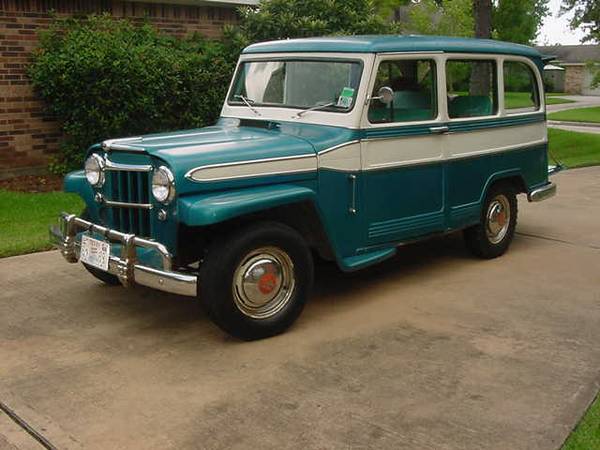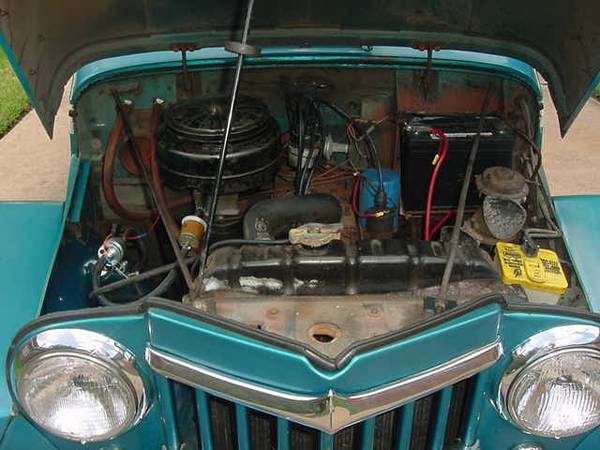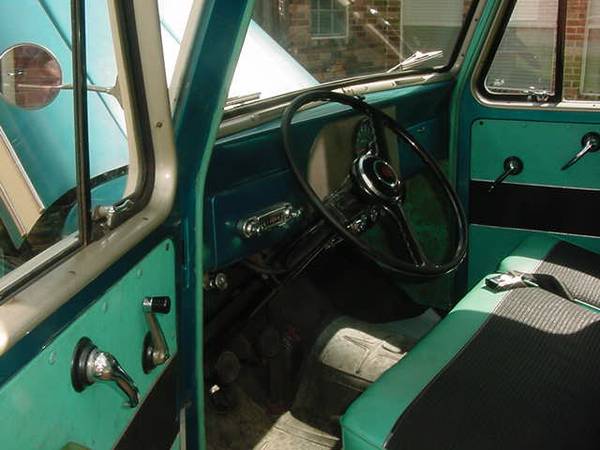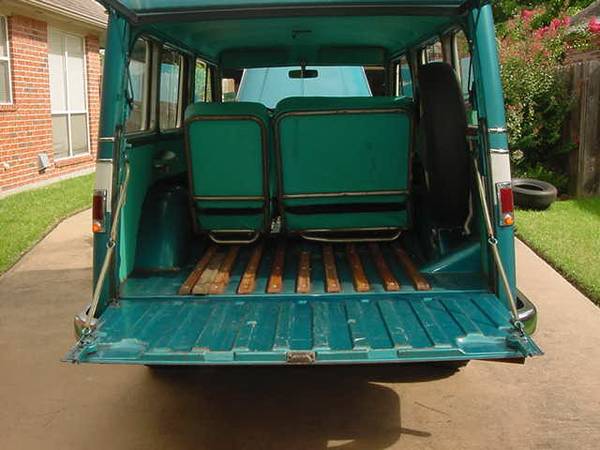UPDATE: **SOLD** Was $11,500.
Dan spotted this nice Maverick.
“1962 Willys Station Wagon, @66,000 miles. Is about 75% restored. The vehicle is nearly all original. You just can not find one like this. The pictures show the vehicle when purchased and updated. I am asking $11,500.00 or best offer. If your interested please contact me and I will set up a time to show the Willys. Please note if you are not serious do not bother me. So please only interested buyers. Will be glad to talk to you over the phone.”





Isn’t that a Maverick wagon it should have a tornado engine 6 cyl overhead cam. very rare nice.
Yeah, I agree. It’s a really nice Maverick, but the engine doesn’t look stock.
Oops. I didn’t notice the wrong engine.
Don’t assume that because this wagon has the 226 L head engine that it is not correct for the vehicle. The Tornado OHC engine was introduced in the 1962 model year, but early 1962 production models may still have had the old L head engine. Without the serial number and engine number, it would be difficult to determine when the wagon was built, but my guess would be it is probably correct.
Thanks Colin.
According to Jim Allen’s excellent book on “JEEP”, he indicates that the L-226 engine was available into 1962 and was phased out in early 1962, with some models showing up with that engine in 1963. He also indicates that the OHC 230 was introduced in May, 1962, which would have been more than halfway through the 1962 model year production run. My guess is that this nice wagon was an early 1962 production model.
When the 1963 Wagoneer was introduced in November, 1962, the standard engine was the 230 OHC 6 cylinder. By 1965, the AMC 327(not a Chevy) cubic inch V8 was available, then in 1968, that engine was replaced with the Buick 350 (not a Chevy) V8.
I wonder how the performance is with the flathead six engine. I have had several Jeeps with the Tornado Overhead cam engine and they were gutless wonders, the flathead has to be better?
The L head 6 put out 105 hp(down from 115 in previous years) at 3600rpm, and 190 lb.ft. of torque at 1400rpm; the OHC 230 engine put out 140 hp at 4000 rpm and 210 lb.ft. of torque at 1700 rpm.
Gear ratios for the L-head 6 engines varied for either 2WD or 4WD. 2WD ratios were 4.88:1, then equipped from the factory with a Borg Warner overdrive for better cruising speeds; ratios for 4WD were 5.38:1, no overdrive available from the factory.
Gear ratios for the OHC 6 ranged from 3.73, 4.09, 4.27 or 4.88. with standard 3 speed transmission in 2 or 4WD models.
I think we can say that the OHC engine horsepower and torque considered was better than the L head 6, however depending on rear end gear ratios, the OHC equipped vehicle may have seemed like a slug but it also weighed about 600 lbs more than the equivalent L-head equipped station wagons (1954-1962 Station wagon vs 1963-65 Wagoneer). Unfortunately, the OHC engine had reliability problems in the civilian versions which led to its early demise by 1966. The military continued to use it until about 1969 in the M715 trucks.
If you had the optional McCullough blower on the L226 engine around 1957 and later, that might have made that engine more powerful than the later OHC 6. Willys/Kaiser had been using the L-226 engine since late 1946 in the Kaiser and Frazer sedans and after Kaiser bought Willys in 1953, the L-226 went into the 1954 Kaiser (with the blower, 140hp)and Willys sedans, station wagons and trucks with 115hp. It was also used in the FC 170 trucks from 1957-1965, so it was getting long in the tooth by the late 1950s and by 1961, was the only flathead 6 cylinder automobile engine produced in the USA, as Plymouth and Dodge had both gone to OHV slant 6 engines in their cars, so it was time for a change to a more modern power plant. Unfortunately, the OHC engine didn’t pan out. Pontiac even tried a 230 OHC engine in the 1967-69 LeMans and Firebird lines which also didn’t last very long. That was basically a 230 cubic inch OHV Chevrolet 6 that John DeLorean and his guys modified with a new cylinder head, cam design and intake/exhaust manifolds.
I have rambled on long enough. Sorry guys!
Colin, please ramble on, I think we all appreciate your knowledge and insight, Thanks.
What basically constitutes a “Maverick” wagon?